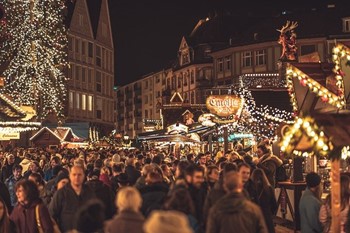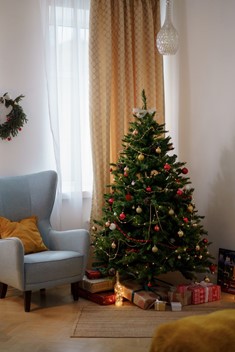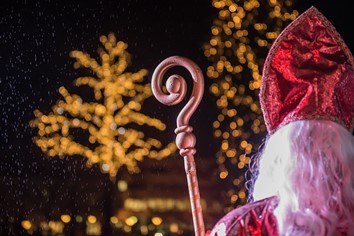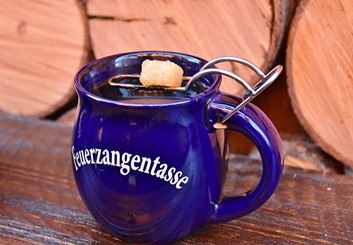Celebrate Christmas the German Way
Not only is Berlin a beautiful city to explore in Winter but there are also many unique Christmas traditions to discover in Germany. Whether you choose to travel to the German capital during Christmas or not, there are many traditions for children and adults alike to brighten up the dark winter months. Spending Christmas in Germany or celebrating the holidays the German way from home with traditions dating back to the Middle Ages is fun for young and old.
 Christmas Markets
Christmas Markets
One of the most popular German traditions are the Christmas markets that can be found all over the country and the world. The tradition dates back to the Middle Ages and became a popular custom during the Reformation era.
The first true Christmas markets was probably held in 1434 in Dresden while other cities held so called December markets up until 150 years before that. Do you want to read more about the history of the markets and where to find the best ones in Berlin? Keep on reading here!
Advent calendar
The Advent calendar is a beloved German Christmas tradition for children especially, basically kicking off Christmas season and being a countdown from the beginning of December to Christmas Day. The first calendars were paper based with 24 windows, that when opened revealed festive scenes and symbols or told the story of the Christkind's arrival.
Today, there's a huge selection of calendars to choose from: they can be made out of paper, there are candy-filled calendars that has chocolates resembling Christmas tree, bells and other festive symbols or many families even create their own ones with little presents for every day until Christmas. Calendars can be found from late Autumn in many shops in Germany.
Put up a Christmas Tree
Christmas trees are synonymous with the holiday. The tradition is believed to have originated in Germany in the 9th century. The tradition developed throughout the years: in the Middle Ages, people hung evergreen trees with apples to represent the Garden of Eden.
In the 16th century, Martin Luther was the first one to add lighted candles to the tree. In the 1850s the tradition eventually gained popularity through Queen Victoria and Prince Albert while German settles popularized it in the United States.
Traditionally, German families only put up their Christmas tree during the morning of December 24th, Heilig Abend, while the rest of the house is decorated beforehand. Many of the older generations still follow this tradition. The tree is richly decorated with candles, tinsel and Christmas balls and other Christmas decorations.
The day is also used to prepare food before the family gathers around the tree as soon as the sun has set. Santa Claus or the Christkind deliver the presents while the children are waiting in their rooms before opening their gifts during the Bescherung.
Advent wreath
The tradition of Advent wreaths was originally started by Lutherans in the 16th century. The wreath is made from evergreen trees, crowned with four candles. Each of them represents one Advent, one Sunday before Christmas Eve, that get gradually lit up until the holidays.
Many families have their own traditions on how to decorate the wreath: commonly used are dried berries, apple and orange slices as well as pine cones, cinnamon sticks, anise stars and festive ornaments. The canles are usually lit when the whole family sits around the table for dinner.
Visit from St Nicholas
Sankt Nikolaus or Nikolaustag is celebrated in many parts of Europe. In parts of Germany and Austria he used to be the main character in Christmas celebrations for a long time. The celebration’s historical source go back to around 245 C.E. when the real Saint Nicholas was born.
In his role as the Bishop of Myra, he is credited with performing several miracles. His feast day is December 6th which is the main connection with Christmas.
According to this tradition, Nicholas is dressed in a white bishop garment, accompanied by an ominous looking and frightening helper dressed in black who teases children who misbehaved with switches. Depending on the region he’s known as Krampus, Aschenmann, Knecht Ruprecht or Hans Trapp.
Nowadays, children place their sock or freshly cleaned shoes in front of their doorstep on December 6th for Saint Nicholas to fill, just to wake up to a stock full of mandarins, nuts and chocolate coins. In some areas, Saint Nicholas also hands out small gifts.
Feuerzangenbowle
Feuerzangenbowle has a long tradition in Germany. The steaming hot drink that translates to “fire tong punch” is much older but became increasingly popular after the cult comedy movie “Die Feuerzangenbowle” was released in 1943. The film about the mischievous deeds of a rich man returning to school over too much punch made the drink wildly popular in the whole country.
You can find the unique punch on almost every Christmas market. And the drink comes with a twist: it is served in a special mug with a metal hook on which a piece of sugar is burned right before enjoying your drink. Compared to mulled wine, the punch is further enriched with rum and has a much sweeter flavour.



